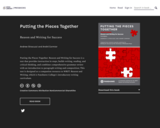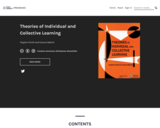
A Common Approach to Work-place Writing
Short Description:
This open textbook is designed to guide college students in developing the vital communication skills that will help with the real, everyday tasks of writing and speaking in their chosen profession.
Long Description:
This open textbook is designed to guide college students in developing the vital communication skills that will help with the real, everyday tasks of writing and speaking in their chosen profession. Organized in five major units— Communication Foundations, Professional Writing Processes, Routine Workplace Communication, Employment and Interpersonal Communication, and Presentations and Group Communication —this opened educational resource is conveniently presented in a variety of AODA-compliant formats and written in the reader-friendly style. This textbook helps ensure that students graduate with the communication skills necessary to succeed in the modern workplace.
Word Count: 221219
ISBN: 978-1-998755-44-8
(Note: This resource's metadata has been created automatically by reformatting and/or combining the information that the author initially provided as part of a bulk import process.)
- Subject:
- Business and Communication
- Communication
- Composition and Rhetoric
- English Language Arts
- Material Type:
- Textbook
- Provider:
- eCampus
- Date Added:
- 09/01/2019


